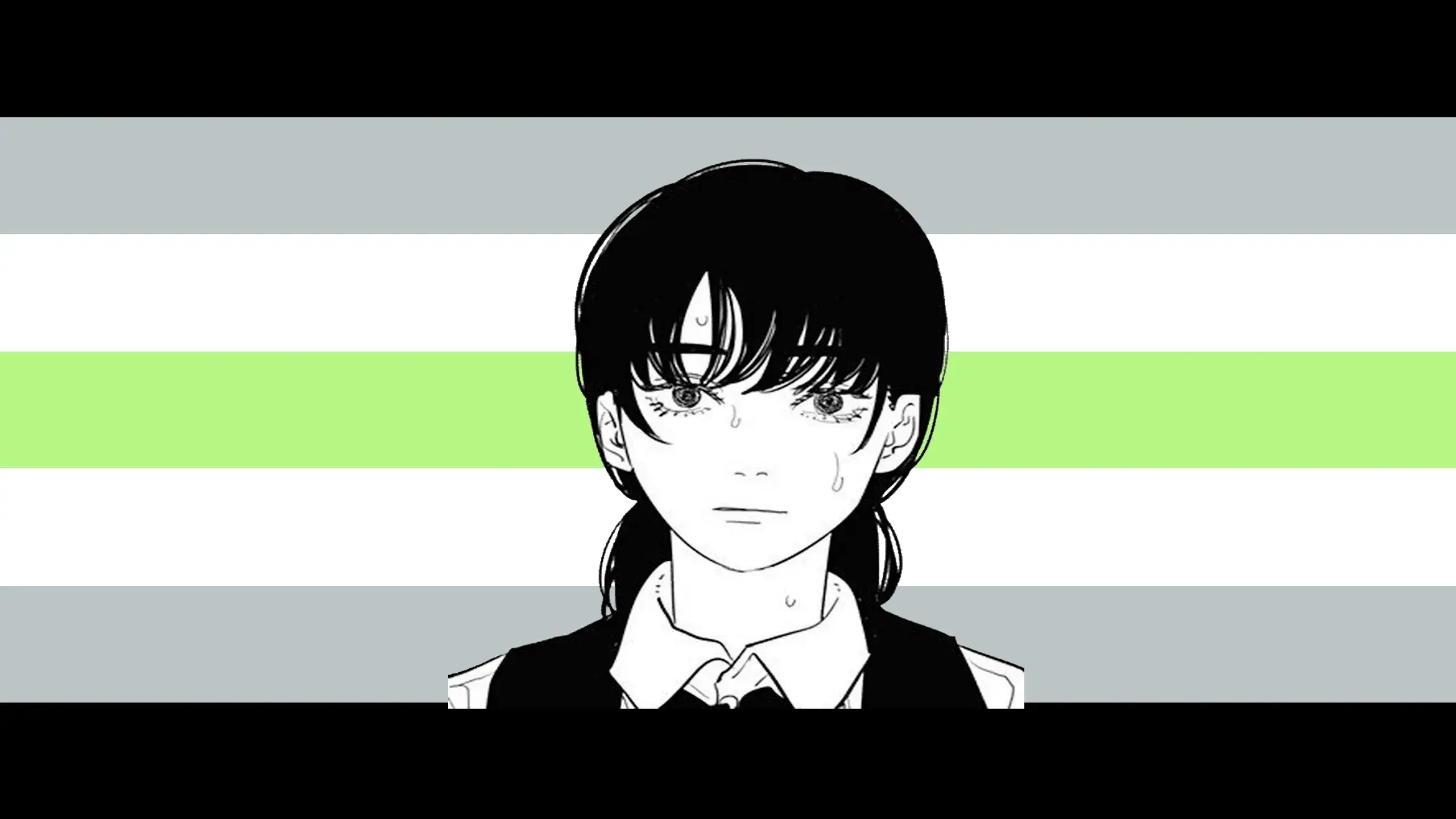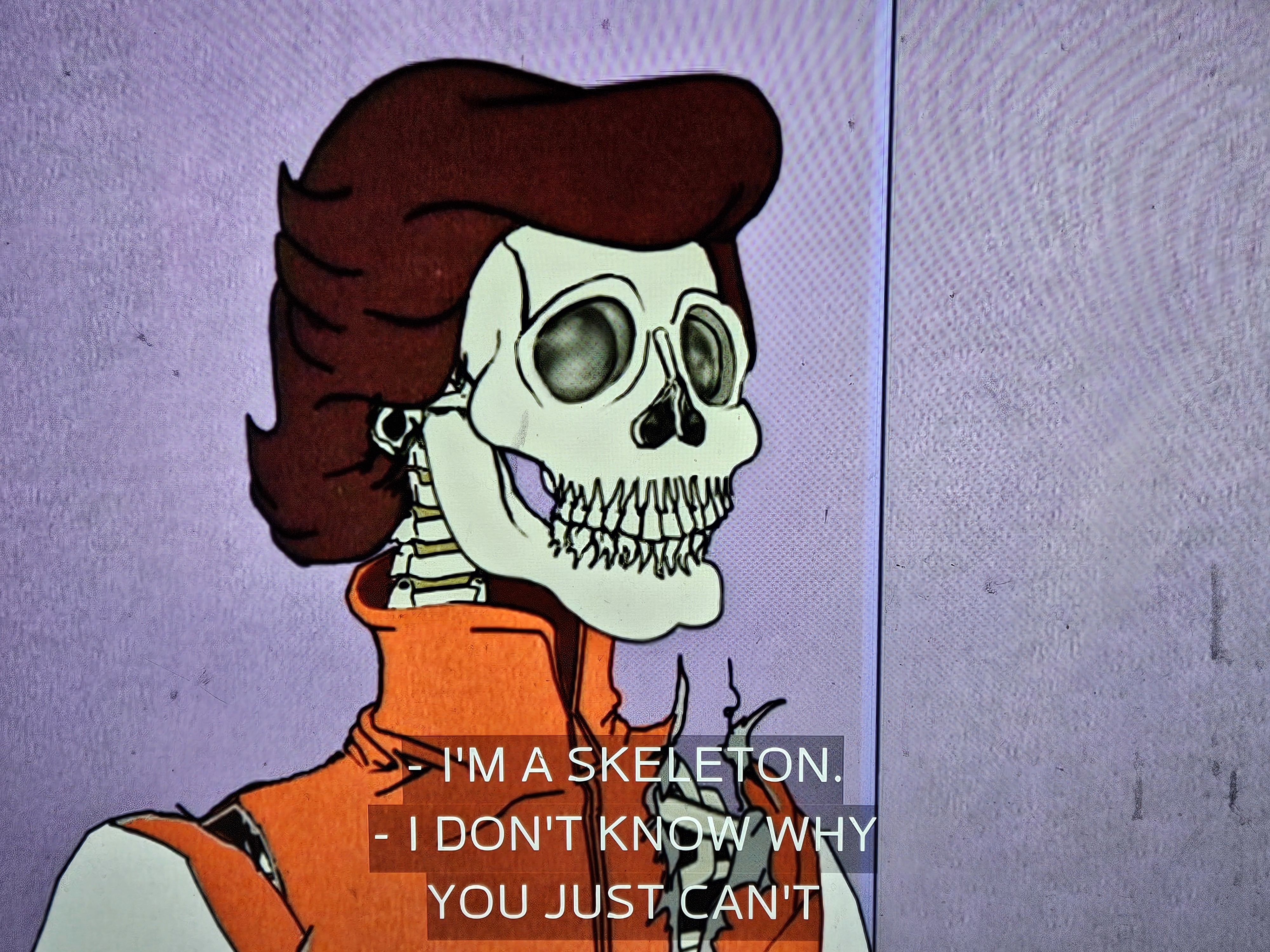And I cannot stress this enough: bury their bones in an unmarked ditch.
Those are original Warhol boxes. Two Brillos, a Motts and a Campbells tomato soup. Multiple millions worth of original art, set on the floor by the front door.
Theres a regular customer whom i do plumbing work for, for the last 3 or 4 years. These belong to her. She also has Cherub Riding a Stag, and a couple other Warhols that i cannot identify, along with other originals by other artists that i also cannot identify. I have to go back to her house this coming Monday, i might get photos of the rest of her art, just so i can figure out what it is.
Even though i dont have an artistic bone in my entire body, i can appreciate art. I have negative feelings on private art like this that im too dumb to elucidate on.
eat the fucking rich. they are good for nothing.
oh so when they have boxes strewn about it’s ‘art’ but when I do it
You see, art is an ambiguous thing. Just because you make some art, it doesn’t mean that you’re an artist… but also it does mean you’re an artist. But does it mean that art is good art ? Is art good just because the right people say it’s good ? Yes. Yes, that’s how it works.

If you make anything that isn’t what you’re told to.make you’re an artist. Posting is writing. Writing is art etc. Art that asks those questions isn’t a bad thing and Warhol, although being an absolute trash person did mainstream that idea and you wouldn’t have the youtube media analysis that brought half of this site over without it.
That’s right.
I was so confused, maybe I’m too peasant brained and didn’t read the post properly, but for some reason I thought paintings were inside the boxes

After my giant argument, thst was the thing I needed to see most.

ITT people who will analyze the fuck out of a TV show or movie going full the curtains are blue mode on fucking Andy Warhol of all people.
Okay, but for real, the photo you’ve just posted, being what it is, is a pretty provocative art piece itself. As @macerated_baby_presidents@hexbear.net said, his art was some meta bullshit regarding the artwork used for advertising and other disposable things, made in a disposable way and sold as high art and it was high art cause he was a high artist. Having a photo of the originals strewn carelessly in some rich guy’s house is fucking perfect. I’d buy a print.
This should be the photo image on Wikipedia for post modern art. It literally is
But idea: Indiana Jones but it’s stealing from rich people instead of the indigenous peeps. “it belongs in a museum!”
it belongs in a museum (of modern art)
or something
Andy Warhol would be so fucking happy to see this if he was alive. This would be nirvana style vindication
I’d watch that. They could be artsy and dapper instead of shaggy leather jacket man, and have to fight through the Bond rejects a rich dude would hire as security instead of weirdly othered brown people (but not instead of nazis, no need to replace those, any excuse to have the hero beat up some nazis is a good one).
Tbh, we might just be recreating Lupin.

Breaking into Stephen Spielberg’s home only to find that his most prized collection of art is protected by a life size replica of the boulder from Raiders of the Lost Arc.

New Hexbear tattoo idea just dropped

There it is
being a plumber is more artistic than those stupid fucking boxes.
rich people are morons.
That’s the point of the boxes in the first place. It’d actually even funnier because of that. Andy Warhol would legit be fucking stoked to see this.
At risk of sounding like a peasant, wtf makes those boxes art? Is me asking that the point, so that rich people and art snobs can look down on the people asking if it is art to reproduce a consumer item? I feel like I’m being involved in someone else’s masturbation
Warhol actually just fucking sucked and was a fed.
Is me asking that the point
yes
so that rich people and art snobs can look down on the people asking
not really
Warhol’s stuff was “controversial” (and eventually famous and stuff) because of this sort of thumbing-your-nose aspect. I mean the original Brillo box is art - an artist designed it to look appealing to consumers, tell you what’s in it, make you feel a certain way, etc etc. The Warhol Brillo box is a silkscreened wooden crate. Is that art? Is it Art? Warhol is the champion of pop art, which (if you’re being charitable) is one angle to look at lowbrow functional art that’s everywhere in our society. To approach from a different angle: I like socialist realism, it’s good for schmucks like me who like a simple story: Lenin or the People or whatever are great because they’re 9 heads tall and depicted in a cool dynamic pose, and it’s pretty, but it is usually not “great” art that makes you think. I see pop art as trying to make us think about whatever intrinsic, lowbrow appeal might be found in consumer art.
Of course Warhol was super good at the art market. Part of the thumbing-your-nose part is that he was making a whole run of these things, they didn’t take that much effort. Everything is silkscreened. Critic and buyer alike were aware that these were not that much more special than the version in stores, and yet somehow rich people were (and still are) paying through the nose for a Brillo box. I have a kind of grudging respect for that at least. I think that at some point, the art market is rich buyers paying to be let into the club - by becoming the butt of the joke they are let in on the joke.
Or as Roger Ebert put it,
Andy Warhol comes along with a genuinely new way of looking at things: pop art. He also has a sense of humor and a certain feel for the mood of our times. He was right. We were ready for pop art.
Then a lot of people, mostly from New York, invest large sums of money in Warhol. Once they’ve done that, they have a vested interest in keeping his stock up. Their interest is all the more frantic since most of them, I suspect, secretly believe Warhol’s soup cans are worthless. They lack the wit to see that Warhol’s art really is amusing and pertinent.
So they overpromote Andy, who overextends himself
Also Jesus christ thank you for apparently being the only other person here who’s taken an art class.
God I haven’t taken an art class since since high school, I’ve just been on a few dates with a girl who went to fashion school. C’mon guys, when we were bullying the conservatives who get mad about “modern art” and Rothko that was for real right?
So Andy Warhol was the precursor to the bored ape yacht club?
Pretty much. I think the bored apes have a less interesting artistic merit at the core - I think they’re just designed to be intentionally ugly/tacky, which is less interesting to me than a new emphasis on existing commodity art - but both are historically interesting primarily because of the way they socially manipulate rich people.
(Also bored apes have the cryptofascist stuff going on)
Which makes this even funnier. Seriously, I know some art people that would buy OP’s photo. There’s some pretentious ass irony here.
It’s not ironic if that was the artist’s intended use (as you seem to claim). Perhaps it is metaphorical, but seeing as you think Warhol would find this amusing, and based on what other people have been saying, being placed randomly in a rich person’s house is the intended use, so it cannot be ironic.
What would be ironic is the Warhol, being made to be sold to rich people, being used to sell cheap cans of soup, then placed in a landfill. Because then it is fulfilling something other than it’s original intention, and that’s irony.
It’s like how Warhol’s use of the Campbell’s soup logo is ironic because it was made to sell soup, but the art piece itself is not, because it was made to be sold to the wealthy.
being placed randomly in a rich person’s house is the intended use
I think Warhol expected these to end up in galleries, where the contrast between commodity art object and fine art surroundings would be intense. He was playing a “trick” on the establishment (one that the establishment was somehow also in on). Finding them incredibly valuable but no longer treated like fine art would probably amuse him; the establishment has responded to his “trick” with their own.
I’m not much of a Warhol guy, but from what little I do know (edit: of his films), I would expect you to be correct. That said, I think if that was the intended use then he was ultimately short-sighted as an artist, which is of the many bad things we can say of Warhol, is not one of those things. Art usually becomes a commodity object after the artist has passed, particularly art that defines a ‘period’.
That said, I generally dispute the idea that art in a gallery isn’t a commodity object. Unless it has been donated and never changes hands again, it cannot escape the commodity cycle. Additionally, I personally hold that an art piece actually being ‘ironic’ is nearly impossible, as irony requires a subversion of intention. Things are often used in a piece ironically, but the piece itself is rarely ironic.
Essentially, if the intent was to only exist in a gallery, then perhaps it is ironic, but I think that by placing your art into the gallery space, you are intentionally placing it into the commodity space, which is something I think Warhol, given how generally intentional he was in what he was trying to do, probably expected to happen. And if he wasn’t intentional, or simply didn’t care where they ended up, then that is not ironic. Irony requires tragedy for there to be comedy.
By “commodity art object” I mean e.g. a Brillo box from the store, not anything that’s being treated as a commodity in the Marxist sense. Guess I picked an unclear phrase. I am trying to refer to everyday, functional, commercial art which is subsumed into commodities; the type of art that pop art was referring to.
Fair point. Again though, the rich have always treated art, even ‘fine art’ in a haphazard, commodified way just like a soup label. I personally always saw the Warhol stills as a commentary on how the establishment treats fine art, and this would just be the natural conclusion of that life cycle, a perfect prediction on his part. Basically, it answers the question ‘How do you get a rich person to buy a Campbell’s soup label?’. Which fits in with most of Warhol’s message which is ‘Well really it’s just because I’m smarter and understand this whole art thing that’s going on better than you.’
Perhaps I am ascribing too much intentionality to Warhol, but given how generally aware he was of the scene he was in and what ended up to other famous artists works, I don’t think I’m off the mark.
Yeah I’m confused, how are they art? What is the message or feeling or whatever they’re trying to convey? I don’t really feel anything when I look at a box of cleaning supplies. If I were in this house I would walk past them, maybe accidentally kick the “millions of dollars worth of art” because they would register to me as less than even worth noticing.
Casual reading on the internet suggests that it is art scene jerk off shit. I’m sure it’s just hilarious and thought provoking if you’re part of that world, but frankly I find the idea that someone is paying or getting paid millions of dollars for a pretend corporate art box just as offensive as the idea of the corporate art box not being displayed in a place of prominence
We have over a hundred comments threads about the cultural impact of Star wars every month and it gets wrung out dry with the most obsessive analysis no one hear can interpret anything from still art. No one here is allowed to complain about media illiteracy again. This is junior high curtain is blue shit. I can see why this is a debate about treats all the time, it’s all people hee understand. I’m not even really into Warhol but this is like art school 101 shit.
I get that you are hyped up on all this stuff, but people are allowed to complain about media illiteracy.
‘Getting Warhol’ or ‘understanding Art 101’ is not the bar for media literacy, because, much like Econ 101 or Poli-Sci 101 or any 101 class, the point of doing the 101 class is to understand the basic arguments and terms which a constant academic (and non-academic) discourse is taking place. It is to get people familiar with the terms everyone is using, yeah? It is from there that you can then explore those terms and definitions presented by the discourse, and figure out if you agree or disagree with them and explain why you do or do not, thus participating in and potentially furthering the discourse along. Disagreement with 101 theory (whatever that theory happens to be at the time) is not only expected, it is encouraged. This isn’t math.
That’s the theory anyways. In reality, 101 classes are about memorizing definitions, sleeping through class, and are unloaded onto some poor grad student or adjunct who would rather be doing research.
Just because they disagree with your analysis and beliefs on still art doesn’t mean that they shouldn’t happen. After-all, by your own definition, it is art that they are creating.
Good comparison with star wars as another example of corporate schlock, thank you. the offensive thing to me is not some curtains are blue straw man bullshit like you are saying, it’s that a staggering amount of money gets wasted by the bourgeoisie on bourgeoisie art which is then financialized and used for more bourgeoisie enrichment when those resources could be used to actually help people.
There’s grift money to be made if you understand that the emperor has no clothes and are willing to perpetuate the kayfabe that he does.
I feel quite a bit when I look at cleaning supplies. Have you ever seen an aisle full of them or a cleaning supply closet? Both situations do have an evocative imagery. Either fluorescent lit rows of bright labels and unnaturally brightly colored chemicals or a dim janitors closet filled with jugs of less appealingly colored and labeled versions of the same, meant for wholesale so no need to have shelf appeal. There’s a lot that can come from the mundane. Art is cool.
Both situations do have an evocative imagery. Either fluorescent lit rows of bright labels and unnaturally brightly colored chemicals or a dim janitors closet filled with jugs of less appealingly colored and labeled versions of the same, meant for wholesale so no need to have shelf appeal. There’s a lot that can come from the mundane.
You described two scenes (and in so doing went much further than the “artist” here), but nothing “came from” it. I still didn’t really feel anything. Those are completely mundane situations and being reminded of them brings no emotions or insights to my mind at all.
I don’t feel anything when I look at most paintings on the walls of galleries. I only don’t accidentally kick them because they’re safely on the wall. I think people, as in specifically our species, have largely deluded ourselves in terms of the impact of static 2D images. You look like once, feel something maybe, shell out a few million to bring it home and then the human/pretty-much-every-organism-with-eyes reaction sets in where if nothing’s moving, it isn’t important. After a while, you’ve seen enough examples of every style of 2D images that it becomes a chore to do the mandatory slow walk with reading-of-the-cards past the paintings in the galleries. The ridiculousness comes into sharp relief when you find that the museum through which you’ve been slow-walking has 24 more wings than you thought, at which point it suddenly becomes acceptable to walk at a reasonable pace and skip entire rooms if nothing immediately catches your eye.
No need to jump from personal distaste of 2-D art to making claims about the entire human race…
Are we not open minded here? Do we not understand the huge spectrum of different ways people move about and view the world?
I’ll grant you there will always be people pretending in order to be part of in-groups or whatever but dang let me enjoy a painting.
I like museums and I like art and I can get understand a lot of feelings conveyed by paintings. I just don’t see those same things here.
Your comment feels a bit like I criticized Rupi Kaur and got a reply like “yeah poetry is bullshit, people who think there’s any meaning in poetry are silly”
I went a little far with it, but my point is that finding something devoid of meaning or emotional impact doesn’t downgrade it to not-art. Repeated exposure to anything can sap it of its impact. If somebody were to donate the original Starry Night to my building and they hung it in the lobby, and if that happened without my knowing that it’s the original, I’d probably never stop to look at and appreciate it, as I’ve been exposed to the image so many times and would assume it’s just another print. It took Warhol saying “hey, look at this” to make people appreciate the soup can and it would take somebody saying “hey, that’s the actual original” to make me actually stop and look at Starry Night.
To be sure, I’m not equating the artistic merits of the works. The Warhol is nice design combined with an art world stunt where he forced people to look at it with new eyes and nowhere near a Van Gogh. The people who own the pictured Warhols have basically reversed the stunt by stacking them as if they had just moved and haven’t unpacked, essentially saying “don’t look at these.”
I went a little far with it, but my point is that finding something devoid of meaning or emotional impact doesn’t downgrade it to not-art.
I disagree. I don’t think something that lacks any intended meaning or intended evocation of emotion can be art. I know this is an eternal and tired debate, but I don’t see the point of the term “art” if you can just say anything and everything is art.
The basis of art is the intent to say something.
this is how I feel when people say “I just don’t really like music”.
I also think that, like music, experiencing art is something you get better at with practice. I get almost nothing out of metal music or like, classical Indian, because I haven’t listened to much. As a culture, we do not spend a lot of time looking at paintings.
Is me asking that the point,
fuck meta shit
What if it’s a video game made by Hideo Kojima or Mr Disco Elysium? Still visual art is also allowed to be a commentary on the greater world.
Disco Elysium is rarely ‘meta’ though. It doesn’t really have much to say on the nature of it being a game, or even itself as a product of the capitalist market system. Occasionally there is a joke like ‘why is your character running around all the time.’ or ‘why is the character so inept half time’ but that is an in-game joke, not a ‘meta’ joke that is a commentary of the nature of games as a medium. You’re not doing any actual analysis here, you’re just throwing shit at the wall. Which is fine and valid if you are fine with making their throwing shit at the wall fine and valid.
You are correct that Kojima does that quite often, generally to an irritating degree in his newer games without an above editor, and he is both beloved and hated for it, in the same way Warhol is.
it’s hard to compare works that are so differing in complexity but there are a lot of moments where kojima can go fuck himself too. At least i’m pretty sure he’s not being funded by the CIA to crowd out revolutionary sentiment.
The point is that by making you question what can and can’t be art, the art has made an intentional statement (“this cardboard box is art”) that you’re responding to. By many definitions that alone makes it art. Even the people who think it’s crap have a vivid emotional response to it, a response directly engaging with the statement made by the piece.
It’s like the guy who hung a urinal in an art gallery, if an artist put it in a gallery on purpose, is it art? Explaining why or why not forces you to define art which I think is a somewhat interesting question.
Actually real art is only hyper realistic drawings of naked women thank you
That sounds an awful lot like bullshit.
So if I drop a piece of paper on the floor, point at it and say “that’s art” I’m a highly talented artist.
I’ve never seen a better argument for art being useless.
oh come on this is a dumb argument. Art depends on prior work. Even science does. If you run a study that says “phenylephrine is no better than placebo” the response can be
a) why would you even think it helps
b) holy shit you’re right
c) everybody already knows thatdepending on prior investigation of phenylephrine. For a few years we’ve known that phenylephrine doesn’t work, so a study released today would be unremarkable. It might have been a bombshell when people thought it worked, or unremarkable before phenylephrine was used as cold medicine at all. In various years, the same study would have meant different things to a reader. If you are an Art Knower maybe your piece of paper is a rebuttal to some famous similar prior work. Maybe you’re a Redditor who snuck into the hexbear art gallery and you’re just littering.
This is EXACTLY the same line of reasoning that made 4chan doxx the “Interior Semiotics” girl because they didn’t know what semiotics are and hadn’t even heard of Interior Scroll. It’s the same impulse that makes conservatives ridicule funny-looking scientific studies that actually do have scientific merit once you know the context. You can criticize stuff, some things can only be understood in context but they still suck, but you have to know what you’re talking about.
Because in scientific studies you can’t have two identical studies that are indistinguishable in every way but ones super valuable because it was done by a famous scientist and the other is worthless because it was done by some guy nobody’s ever heard of.
The fact that Warhol painted boxes are worth more than one of the actual boxes filled with a product is the exact opposite of science.
Because in scientific studies you can’t have two identical studies that are indistinguishable in every way but ones super valuable because it was done by a famous scientist and the other is worthless because it was done by some guy nobody’s ever heard of.
You absolutely can, haven’t you heard of impact factor? It’s how Avi Loeb keeps publishing garbage papers because he’s a big well-cited name. There’s a whole mess of problems caused by the fact that journals, researchers, and universities are trying to optimize their work output to be cited by many others instead of being useful on its own merits. Anyway I never talked about the artist themselves. Your piece of paper can’t be evaluated without knowing if it’s referring to anything. Fame has little to do with it; if Doodle On The Floor was already well-known even an accidental piece of paper on a gallery floor could be interpreted as a brutal “that doodle sucks” response. (These simple examples are the shit done by art school kids who are there to waste money. Usually good art has something more complicated to say.)
Also you have not rebutted my point that you cannot meaningfully judge high-level work in a field without basic knowledge of the field. If you didn’t have to know anything about science to read a paper then it wouldn’t be science, it would be a New York Times editorial. If you didn’t have to have any context to understand a painting (even populist styles!) then it would be housepaint. Philistine argument, plugging your ears and insisting that no legitimate human achievement will ever take a little thinking to wrap your head around.
Again your arguing against these boxes of corporate logos being art.
What is the understanding that I’m missing that makes these carbon copies of boxes of cleaning supplies different from when my daughter traces a cartoon character.
Also with the whole scientific thing you’re arguing that the problem is that people give better known researchers more legitimacy which is the exact problem I was sprinting out with the art. It shouldn’t be “more artistic” because of who painted it just like those papers aren’t more accurate because of who published them.
You’re highlighting the exact thing I said made it bullshit.
What is the understanding that I’m missing that makes these carbon copies of boxes of cleaning supplies different from when my daughter traces a cartoon character.
Idk dude, read my earlier comment about it or like the wikipedia page on pop art or something. When you say “So if I drop a piece of paper on the floor, point at it and say ‘that’s art’ I’m a highly talented artist,” you are doing some ridiculous nihilist thing where you attempt to say that context could make anything into art, and therefore we shouldn’t take context into account. You’re arguing against understanding art in general.
It shouldn’t be “more artistic” because of who painted it just like those papers aren’t more accurate because of who published them.
You are badly misreading what I wrote, so this will be my last reply. I never said it matters who painted it. It matters when it was painted, what it was referencing, what the world was like at the time: what does the work mean? If you drop a piece of paper on the floor, there’s no famous Doodle On The Floor to reference, it’s just a meaningless piece of paper. When Warhol made those crates, the point was for people to stop and wonder that fine art in a gallery (for instance, a limited run of some woodblock prints) can share almost exactly the same intent and production method as ubiquitous, unpraised commodity art (for instance, postcards in a gift shop). If your daughter was killed in Gaza maybe we’d put her last sketches in a museum. If she showed up in ancient Egypt when nobody knew how to do perspective they’d be a big deal.
No investigation, no right to speak. You will need to learn a little about art if you want to say anything meaningful about it on either level. You can’t persuasively argue that a particular pop art piece is “not art” without knowing a little bit about pop art. You can’t effectively argue that “art” is contextless and inherent without knowing how these arguments have been already developed and rebutted by different schools of art. This is genuinely intro level stuff.
Is art supposed to be useful? You can’t feed your family with the Sistine Chapel or hammer in a nail with the Mona Lisa, are they useless? Just expensive wallpaper?
If you really think like this all I can say is please try appreciating art, not just as pretty pictures but all it’s facets. I’m sure you’ll find it so much more rewarding than you think. It doesn’t take much time or money or education, just find a way to really immerse yourself in some form of art.
I understand the concept of art what I do t understand is why a box of brilliant pads is art if it’s done by some asshole and worth millions of dollars when it’s undistinguishable from a literal box of cleaning products.
I can appreciate art especially of things that are actually pleasant to look at, somebody getting flustered because there’s a couple boxes of paper towels stacked on top of each other is the opposite of that.
At risk of sounding like a peasant, wtf makes those boxes art?
People consider it so, that’s literally it.
rip to Andy Warhol your lazy ass would’ve loved AI
deleted by creator
deleted by creator
There are a bunch of artists who were doing amazing things, got involved with Warhol and then shit just went bad. Basqiuat is the most egregious though.
Please enlighten me
deleted by creator
deleted by creator
I hope someone crops out “ASBESTOS ASBESTOS ASBESTOS” and submits it as an emoji under “:obnoxious-liberals:”
If you’re in this thread arguing about how everything is art, I’m stealing shit off your porch
I’ve got some paintings of soup cans I’ll leave out there for you
This is why I let people play with my toy collection
They’re supposed to be fun, that’s their designated purpose
Art’s purpose is to be shared and provoke emotion
This is just a Funko pop wall for the bougie set
That’s the joke. Google Andy Warhol. All of you.
the rich are also why that pile of shit is “worth” so much money, so fuck them for that too.
Even though i dont have an artistic bone in my entire body, i can appreciate art. I have negative feelings on private art like this that im too dumb to elucidate on.
Same. These rich fucks treat art like million dollar funko pops and it sucks ass.
Jean Baudrillard has some thoughts about private art
It may seem strange to be analyzing the ideological process somewhere other than in the traditional, political or cultural sanctuaries. But the point is precisely that the market for paintings and the auction sale of the work of art permit us to decipher the articulation, and thus the process, of ideological labor because they are situated in the contexts of economic power and the cultural field. The auction, this crucible of the interchange of values, where economic value, sign value and symbolic value transfuse according to the rules of the game, can be considered as an ideological matrix — one of the shrines of the political economy of the sign.
It is a question of decoding the birth of the sign form in the same way that Marx was able to uncover the birth of the commodity form in the Critique of Political Economy. In consumption generally, economic exchange value (money) is converted into sign exchange value (prestige, etc.); but this operation is still sustained by the alibi of use value. By contrast, the auction of the work of art has this notable characteristic: that economic exchange value, in the pure form of its general equivalent, money, is exchanged there for a pure sign, the painting. So it is an experimental terrain, simultaneously collective and institutional, for separating out the operation of this sign value.
The decisive action is one of a simultaneous double reduction — that of exchange value (money) and of symbolic value (the painting as an oeuvre) — and of their transmutation into sign value (the signed, appraised painting as a luxury value and rare object) by expenditure and agonistic competition.
In expenditure, money changes meaning. This fact, established in the auction, can be transferred as a hypothesis to the whole sphere of consumption. The act of consumption is never simply a purchase (reconversion of exchange value into use value); it is also an expenditure (an aspect as radically neglected by political economy as by Marx); that is to say, it is wealth manifested, and a manifest destruction of wealth. It is that value, deployed beyond exchange value and founded upon the latter’s destruction, that invests the object purchased, acquired, appropriated, with its differential sign value. It is not the quantity of money that takes on value, as in the economic logic of equivalence, but rather money spent, sacrificed, eaten up according to a logic of difference and challenge. Every act of purchase is thus simultaneously an economic act and a transeconomic act of the production of differential sign value.
Certainly in everyday consumption the specific (and fundamental) aspects of the auction are largely effaced: the direct experience of competition, the challenge, the agonistic community of peers, etc., which make it such a fascinating moment, the equivalent of poker or the fête. But behind the purchase (or individual reappropriation of use value) there always remains the moment of expenditure, which even in its banality presupposes something of a competition, a wager, a challenge, a sacrifice and thus a potential community of peers and an aristocratic measure of value. Let us not be mistaken: it is this, and not the satisfaction of needs, that occasionally turns consumption into a passion, a fascinating game, something other than functional economic behavior: it becomes the competitive field of the destruction of economic value for the sake of another type of value.
They treat them like money laundering and tax dodging vehicles.
High art chunko pops but they’re subversive
It’s just showing off the exclusivity
Real dumb behavior to be sticking those boxes near a window so they can get gradually sun damaged.
I think the real atrocity here is that cardboard boxes can be used as an investment for millions of dollars but that’s the stupid world of fine art for you.
Warhol’s always an interesting discussion to have.
He would have a kick about how we’re talking about it sitting in a tacky rich person’s living room, I’m sure. In the end tho it really doesnt matter what he made or why he made it, his work is more about poking fun at the art market. And in a sense that doesnt matter either, cause it’s one rich guy making fun of other rich guys.























